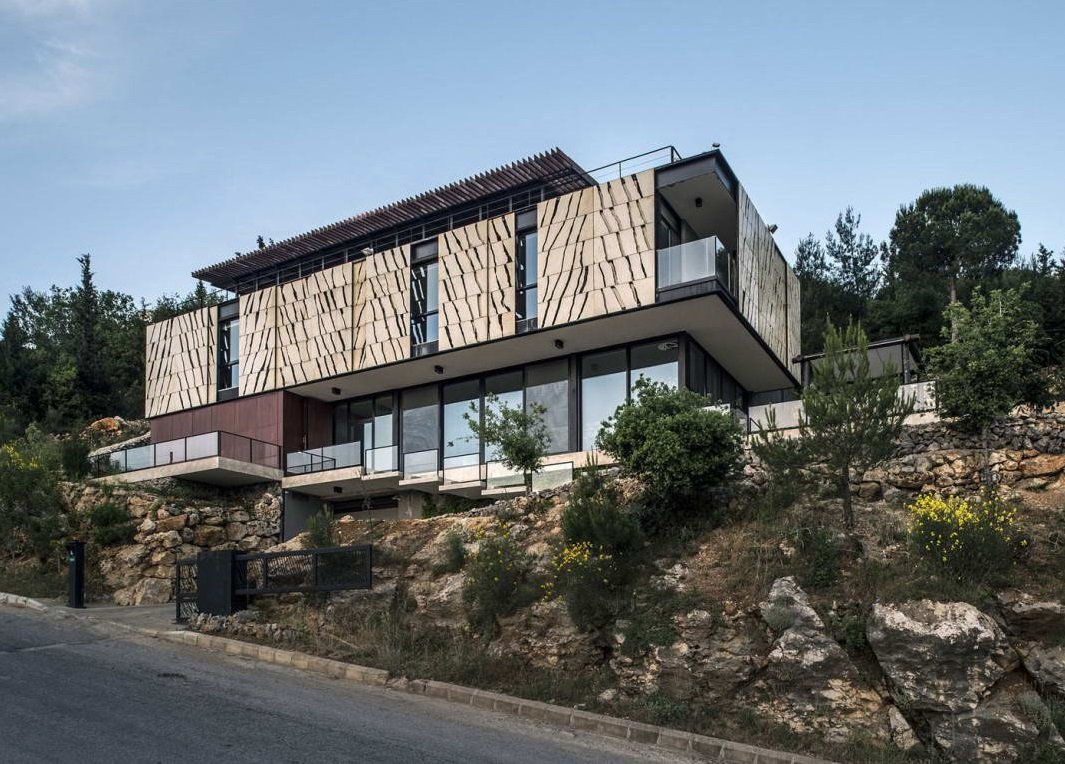#11784. Dynamic Hillside Façade: Villa with Diagonal Wooden Cladding
The presented modern villa demonstrates an expressive example of the organic fusion between architecture and natural landscape. The house is built on a rocky slope, which dictated the stepped organization of the volume. The architectural composition consists of two main levels: a lower floor with panoramic glazing and a cantilevered upper volume with distinctive façade detailing.
The façade of the second level features particularly noteworthy detailing — a rhythmic pattern of wooden elements creating a dynamic design of diagonal lines on a light background. This technique not only provides visual expressiveness but also creates an interplay of light and shadow on the building's surface throughout the day. The upper part of the building is crowned with a wooden pergola overhang that emphasizes the horizontal lines of the composition and adds functional shading to the roof terrace.
The lower level contrasts with the upper one through the use of dark material in the framing and maximum transparent glazing, which visually lightens the structure and creates the impression of a floating upper volume. Glass railings on the terraces enhance the sense of lightness and openness while providing unobstructed views of the surrounding landscape.
For residential construction, several interesting techniques can be borrowed from this project: the use of contrasting materials to divide volumes, the application of rhythmic wooden elements as both decorative and functional façade solutions, the organization of open terraces with transparent railings, and the integration of the building into the existing landscape without radical alteration.
